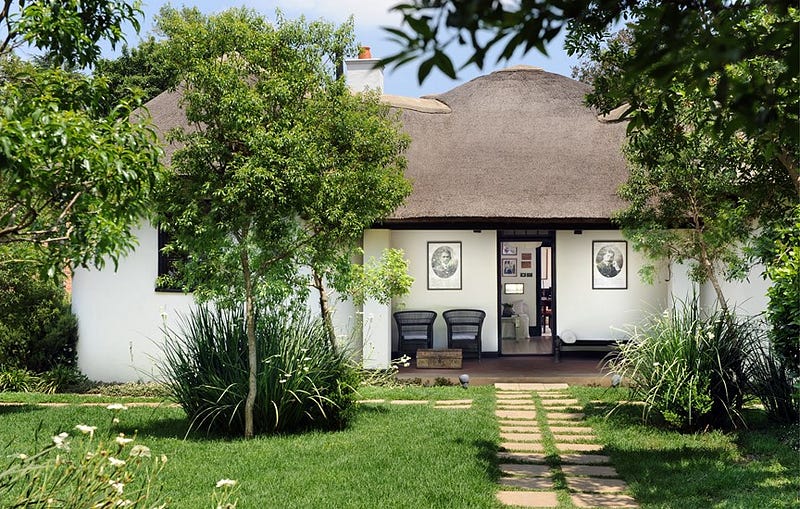
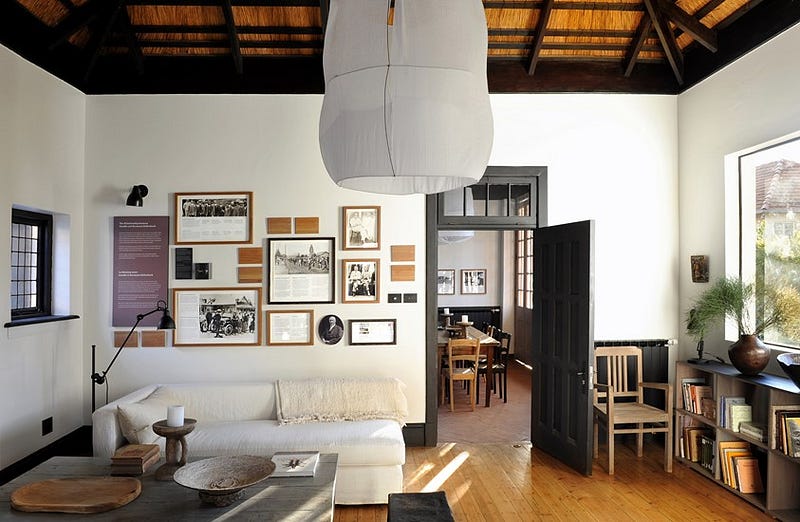
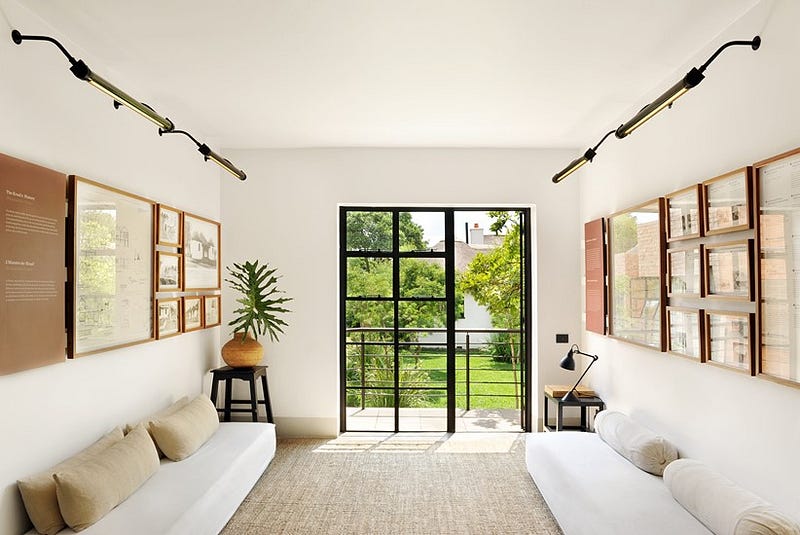

“In a gentle way, you can shake the world.”
Just over a hundred years ago, Mohandas Gandhi settled in a house that had been specifically designed for him by German-Jewish architect Hermann Kallenbach. The modest home was based on the shape of two local rondavels, built with European building methods and named the Kraal, which means barn in Afrikaans. This is where Gandhi lived with Kallenbach between 1908 and 1909. Two friends embracing a simple existence, growing their own fruit and vegetables and practising personal, spiritual and financial self-discipline.
It was within these walls that the concept of passive resistance, Satyagraha in Sanskrit, was born. A pacifist form of protest that Gandhi was to take up again later in India, leading the country to independence. Today Satyagraha House has a new life as both a museum and guest house that offers an appropriately peaceful and contemplative serenity. Restored, cherished and with many lessons to be taken from the curated photos, books and journals on display. I was lucky enough to be invited to spend a night here.
Travelling from a day well spent in the Maboneng Precinct lunching and seeking out Street Art, the drive took only 20 minutes along Hillbrow’s Commissioner Street and down Louis Botha Avenue. It was a Saturday and Ellis Park Stadium was hosting a soccer game that was drawing expectant crowds. Colours were vibrant as the smells and sounds that greeted us. I hadn’t been in this area for years and it tasted of raw and real living.
As we neared the address and took the turn into residential Orchard, a leafy green neighbourhood that is home to Satyagraha, the contrasting quiet and tranquillity were instantly apparent. The property itself has seen over a century of change from the days when it had an elevated position over rural land, to the space it now holds tucked between two synagogues and some beautiful family homes. I am instantly astounded that it has been preserved all this time.
On arrival, we are greeted by our charming softly-spoken host Lionel, a Muslim Congolese man who works in the promotion of peace and is a perfect match to the philosophy and principles of the place. Its as though an instant disconnect takes place, where suddenly everything seems possible and just a little bit surreal and introspective from the moment you step through the doors.
The House
Renovations were overseen by a team comprising a historian, curator, architect, two interior designers and their respective teams, who restored the original spirit of the house, bringing back to life an important page in the history of both South Africa and Mohandas Gandhi. The Satyagraha House is now a registered part of the country’s historical heritage and presents an innovative accommodation concept that links a guesthouse to a museum.
In total there are seven rooms spread out between the original house, known as the Kraal, the cottage that was added a few years later, and the modern wing that was added in 2010. The house once had stables and a tennis court too.
I appreciate how the house honours the people who played the most significant role in Gandhi’s life at the time, naming the rooms after them.T he Kasturba Gandhi’s bedroom, after Gandhi’s wife. The Manilal Gandhi bedroom, after his son. The Doke bedroom after Reverend Doke, a close friend. The two-bedroom Kallenbach cottage. In the modern wing, the Henri Polak bedroom that I stayed in, was named for the friend and political colleague of Gandhi. The Sonja Schlesien bedroom, for Gandhi’s secretary and the Thambi Naidoo bedroom, after a friend and collaborator of Gandhi’s from 1906 to 1913.
All this transformation was made possible after Voyageurs du Monde, a French tourism operating company, bought the property in 2009, putting end to a succession of owners, and dedicated it to the two men, their history and to Satyagraha.In keeping with the ascetic principles of Satyagraha, the house aims to respect the spirit of its first residents. Meals are entirely vegetarian and prepared on the premises with fresh vegetables and herbs grown in the garden.
The homemade fruit juice cocktails are particularly good, and the endless servings of sweet mint tea brought back memories of a time spent with Beduins in the Negev desert in years gone by. One can not have enough of it. In the morning big plunger pots of steaming coffee, freshly baked bread and scones form part of the delicious service.
The rooms are simple and incredibly stylishly fitted, each item of furniture covetable. The bathrooms with beautiful black basin, good shower and quality amenities match all requirements. There is no television, alcohol or cigarettes, although as a concession incredibly good uncapped WiFi is offered. Underfloor heating and three fireplaces in the house, ward off any cold.
Guests may book introductory courses in yoga and mediation. I felt a sense of peace here, as though the contemplative nature of the house’s history and the passive influence of change, reminded me that I too can live by a similar philosophy.
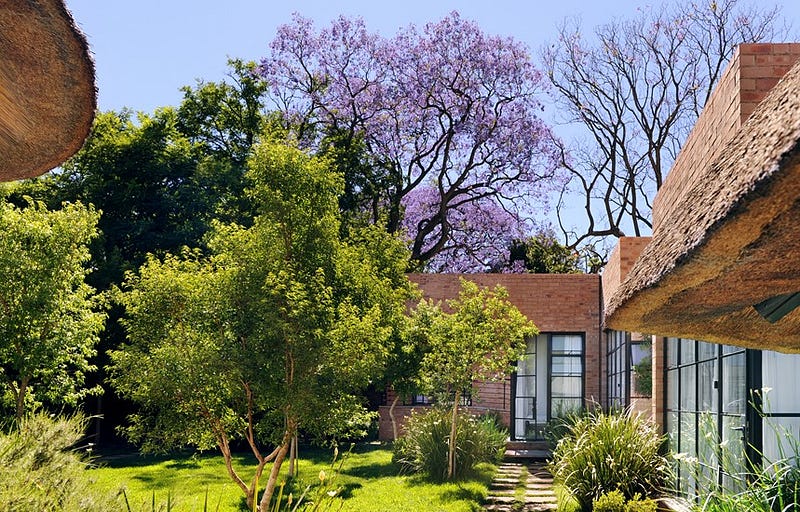
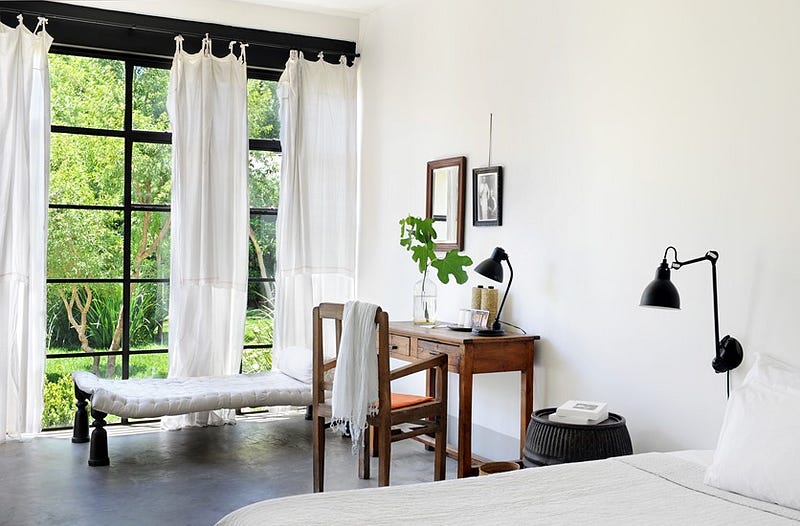



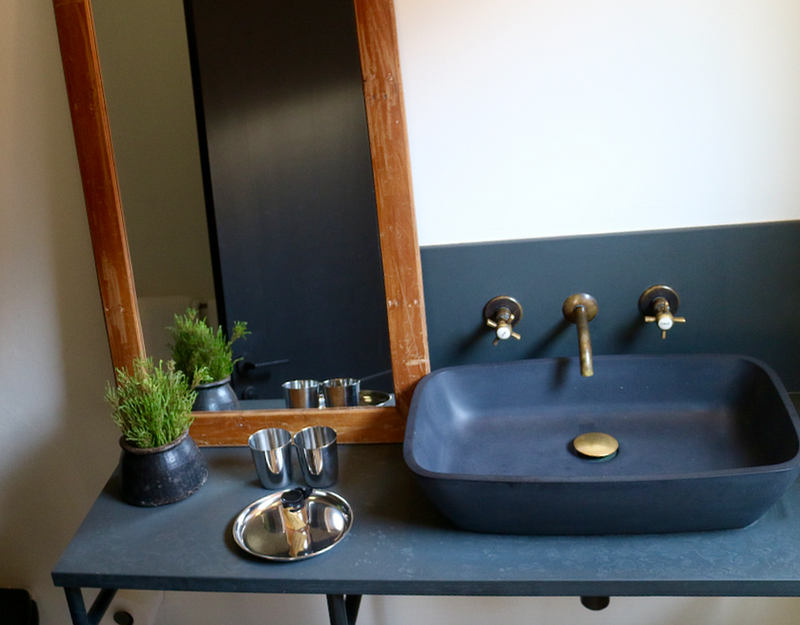
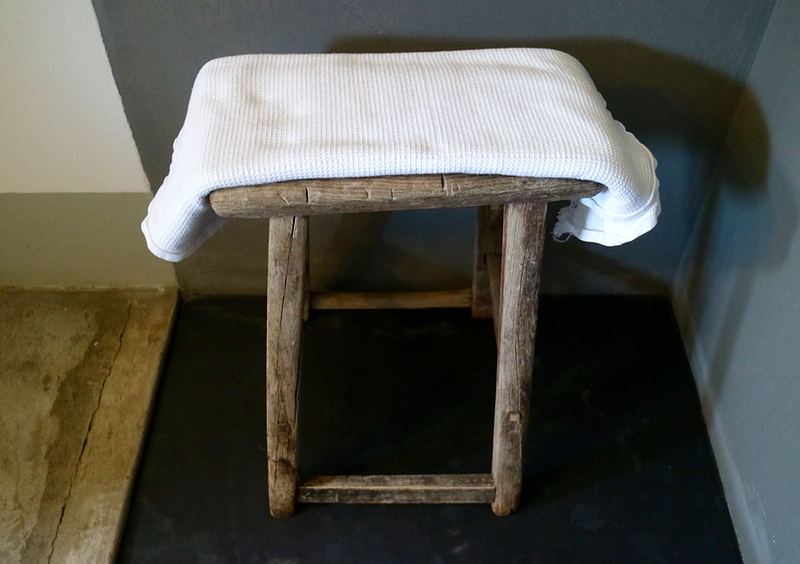
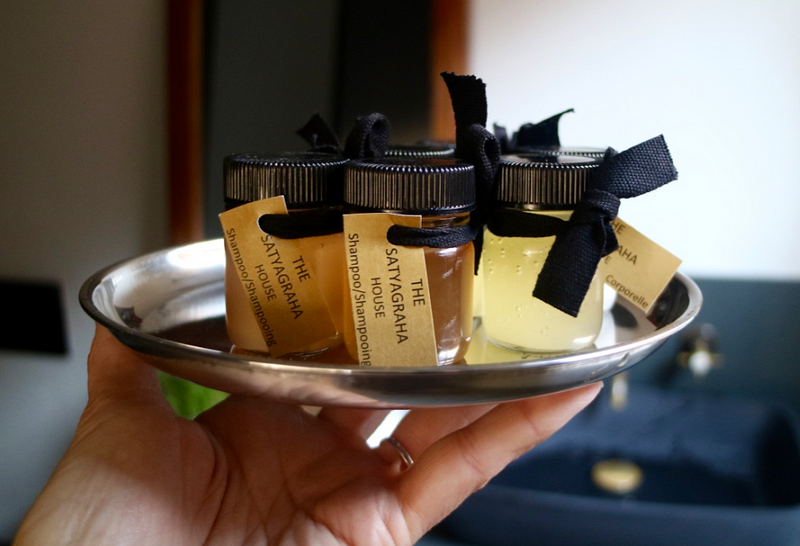
The Africology amenities in the bathroom. All products used are Fair Trade certified.
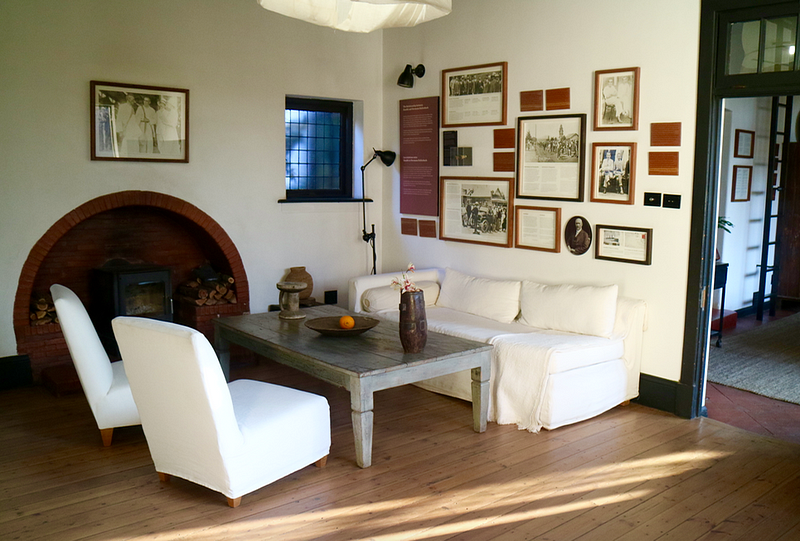

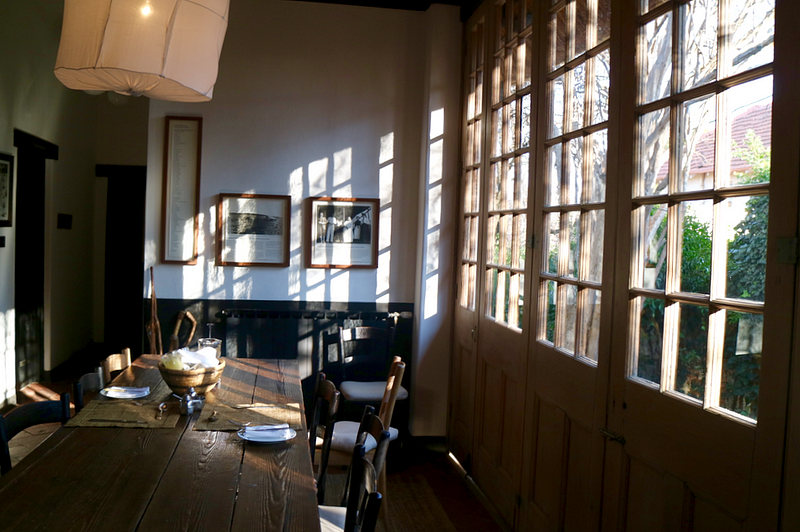
Below my breakfast, as enjoyed next to the fire as the winter sun shone through the windows. All meals here are lovingly prepared and served by the team on hand and are strictly vegetarian. No alcohol is allowed on the property and sweet mint tea is served in generous quantities.

The Museum
The museum retraces Gandhi’s experiences in South Africa and particularly those that he shared here with Kallenbach, and makes up the heart of the house, creating a peaceful and meditative atmosphere that gently captures Gandhi’s life.
As you walk through the rooms and read the captions on carefully curated photographs, notes and letters, insight is offered into the modest life that he lived here. The museum is managed by Lauren Segal, who also heads up other museums in the city, including the Apartheid Museum.
Lifesize prints bring perspective and large murals invaluable messages. The one simply reads — “My life is my message” — quoting Gandhi’s response when asked what message he could give to the world. The Museum is open daily and access is free to the public.

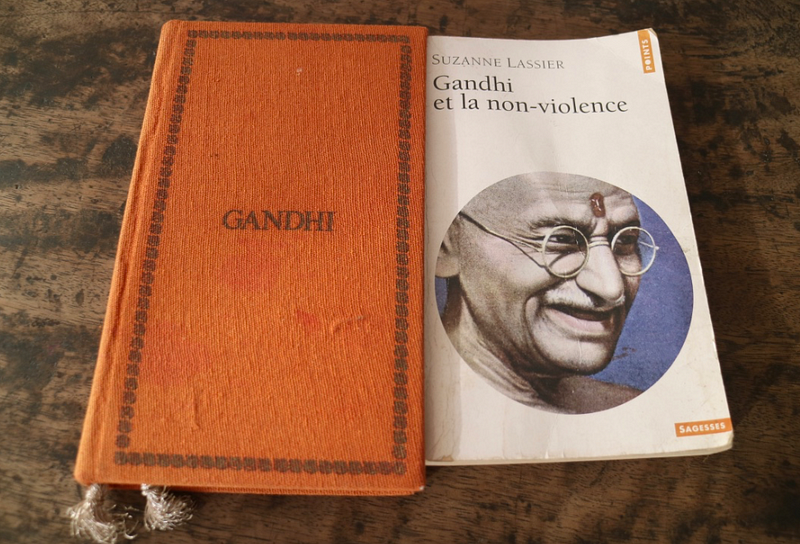
The History
‘As Gandhi himself said, South Africa was essential to his personal achievement. It is during the 21 years he spent in South Africa, from 1893 to 1914, broken by a few visits to India and England, that this timid young man who had just passed the bar examination became the man who would lead India to its independence and instigate the world movement of decolonisation.
A routine procedure of the time at the Pietermaritzburg train station — Gandhi’s arrest for defending his right to travel in the whites-only wagon — would later change the world. This event is what initiated Gandhi’s contemplation of racial discrimination, and represents the beginning of his philosophy of nonviolent protest and many arrests in the defence of the Indian people.
This passive resistance: Satyagraha was born and evolved in South Africa before arriving in India and eventually, the world. When, at 46, Gandhi left South Africa, he also left a way of thinking and acting that found an echo in many of the country’s struggles, most notable that of Nelson Mandela. Even though Gandhi’s adventure in South Africa started in Durban, Johannesburg witnesses his main struggles.
Both Kallenbach and Gandhi led a life of meditation and chastity here. Gandhi slept in an attic room which he entered via a ladder, but he and Kallenbach shared the same kitchen and entertained their guests in the living room. The houses did not have connecting doors, and it was necessary to leave one house in order to enter the other.’
Kallenbach’s life was transformed by their life together and the money that he spent on himself was cut to a tenth of its initial figure. They left in 1909, and the house had several owners before entering a new era with Voyageurs du Monde.
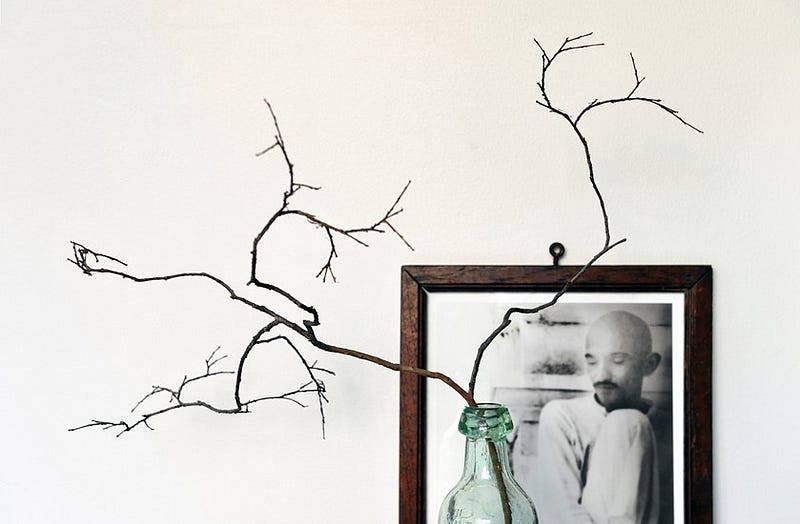
Things to do at Satyagraha and in Johannesburg.
– Take a guided tour of the house as you retrace Gandhi’s footsteps, learning more about how he spent his time here. Also visit the many places that witnessed Gandhi’s passage, including Constitution Hill, the current house of parliament and the prison where Gandhi and Mandela were both once held.
– Spend time in Soweto, the symbolic neighbourhood of the anti-apartheid struggle where Nelson Mandela fought the injustices of his time. Today a vibrant city of its own character, and perfect for exploring by bicycle.
– Visit the Apartheid Museum that lays raw this tragic time in the country’s history.
– Spend time in Maboneng and get a feel of this exciting regenerated suburb.
– Learn more about the Gold Rush. Johannesburg was founded in 1886 following the discovery of gold here. Visit a mine and the moving Workers’ Museum that gives insight into the lives of the miners that make a living finding gold here.
– South Africa’s economic capital is also its fashion capital. Shopping, interior decorating and nights out in trendy areas such as Sandton are brimming with places although the new heart of fashion I’m told is the district between Troye Street and Goud Street on Eastside.
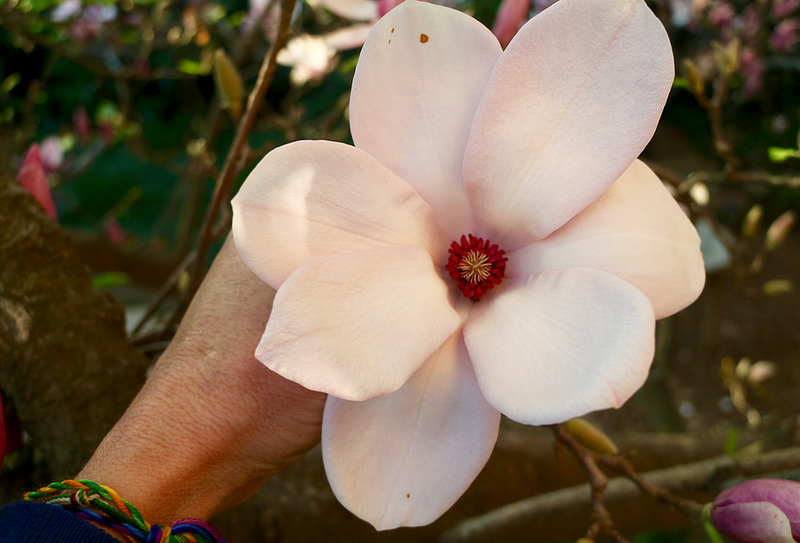
Some of the magnolia flowers in the garden. The magnolia flower is considered a symbol of nobility and perseverance, soft and subtle in colour yet strong in appearance.
I absolutely loved my soul-nurturing stay here and can’t recommend what is offered enough. Thank you for allowing me to stop in time and be reminded of what matters, as I took lessons from those who walked this land before me.
Disclaimer: I was hosted by Satyagraha House on a Dinner, Bed and Breakfast basis. As kindly arranged by Theresa Gibbon PR.
NOTE: Top four photos courtesy of http://www.succes-voyage.com/.

One of the many quotes found displayed on the wall.





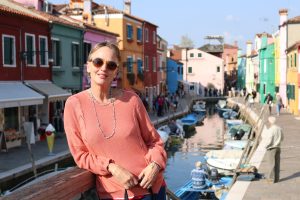






One Response